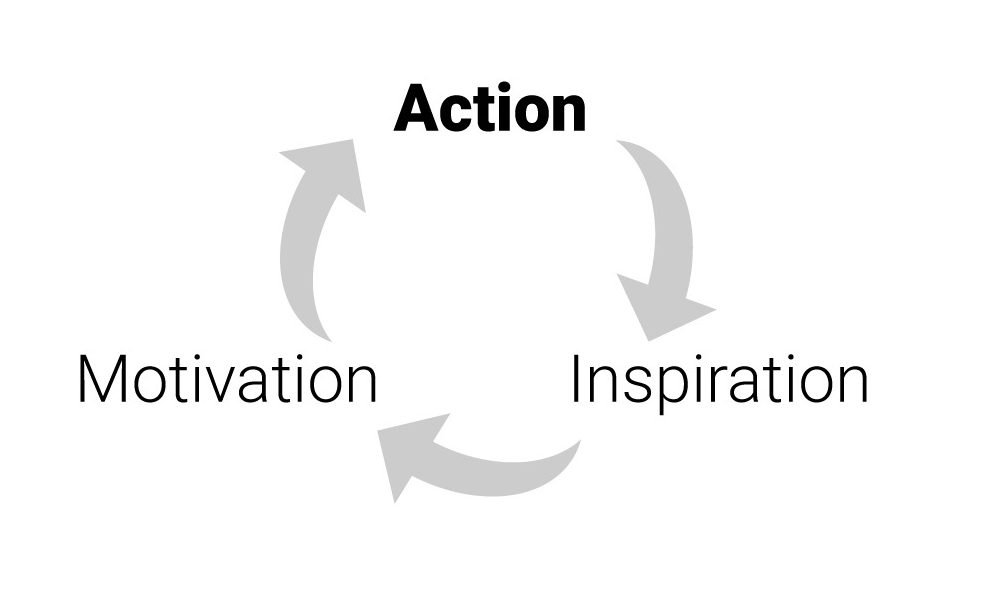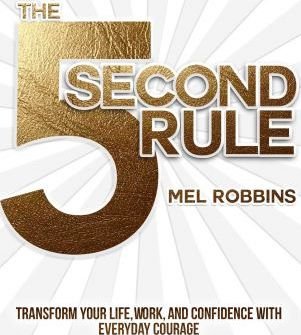Table of Contents
Beat Procrastination with The 5 Second Rule
Make Life Easier
This week, we’re talking about the amazing Mel Robbins, and her trick for beating procrastination that she calls The 5 Second Rule.
The Amazing Mel Robbins

Mel Robbins is a CNN commentator and motivational speaker.
Back in June of 2011, she gave a TED Talk called How to Stop Screwing Yourself Over. At the tail-end of the talk, she briefly mentioned her 5 Second Rule idea.
It exploded. From there, the 5 Second Rule morphed into a bestselling book by the same name, The 5 Second Rule
According to Mel, procrastination is…
…not a form of laziness at all. It’s a coping mechanism for stress.
Most folks think that if they could simply get motivated, they’d beat procrastination. Mel says that’s not the case.
She says that, most times, it’s our fear that’s holding us back.
The fear of sucking, of not being good enough, of feeling like a loser—none of us wants to face that reality. So we avoid it like the plague.
What is The 5 Second Rule?
The 5 Second Rule: The moment you have an instinct to act, you must count 5-4-3-2-1 and physically move or your brain will stop you.
Seriously, that’s it. It’s that simple. And, it really works.
Why Does it Work?
It’s science! Mel spends much of her book covering the science behind why this technique really works — why it really helps you beat procrastination.
As humans, we feel first and think second. Because of this, we let our feelings get the better of us.
From the book: “According to neuroscientist Antonio Damasio, it’s our feelings that decide for us 95% of the time. You feel before you think. You feel before you act. As Damasio puts it, human beings are ‘feeling machines that think’ not ‘thinking machines that feel.’ And that’s how you ultimately make decisions—based on how you feel.”
Mel says that it only takes 5 seconds for us to talk ourselves out of doing what we need to do. Therefore, she explains that The 5 Second Rule accomplishes two things:
- Counting backward interrupts habit. It forces a mental shift away from feelings and prompts you to act
- Physical movement helps you override that startup inertia
The Action-Inspiration-Motivation Loop
Let’s consider the action-inspiration-motivation loop:

Most folks believe that, in order to take action, we must first be inspired. Then we’ll become motivated enough to act.
In fact though, this pattern is a loop: If we simply start by taking action, inspiration will follow, which will bring motivation with it. It’s a loop that reinforces itself!
The 5 Second Rule helps propel us into action, even when we don’t feel like it.
I don’t know when we all bought into the idea that in order to change you must “feel” eager or “feel” motivated to act. It’s complete garbage. The moment it’s time to assert yourself, you will not feel motivated. In fact, you won’t feel like doing anything at all.
A Quick 5 Second Rule Cheat Sheet
Maybe you’re thinking: Alright, this is all fine and good, but when is it really useful? Here’a quick rundown of possible times to use the rule to jog your imagination.
First, recall the rule: The moment you have an instinct to act, you must count 5-4-3-2-1 and physically move or your brain will stop you.
Now, use it in any of these situations:
When you want to shift your mindset / attitude
- During tense conversations
- When driving in traffic
- Standing in line, frustrated, in the store
- Flying on an airplane
Beat procrastination: Starting when you don’t feel like it
- Moving your butt off the couch
- Getting out of bed in the morning
- Starting work
- Cleaning the house
Interrupting anxiety or worry
- Mel covers this in depth in the book!
- She uses the Rule to stop anxiety in its tracks, and to refocus her mind on something more positive
- “As soon as I catch myself worrying, I use the Rule, 5- 4- 3- 2- 1 and I think of something more positive—like the thought of [my husband] smiling as he drives down the road.”
- “Then I asked myself two simple questions: ‘What am I grateful for in this moment? What do I want to remember?’ When you ask that simple question, you impact your brain at a biological level. In order to respond you have to take stock of your life, relationships, and work and search for an answer in the moment.”
- “Feeling grateful doesn’t just feel good. According to neuroscientist Alex Korb, it changes your brain chemistry by activating the brainstem region that produces dopamine.”
Changing habits
- Interrupting bad habits
- Forming new, good habits
So I made myself a simple promise: If I knew that I should do something that could change me for the better, then I would use the Rule to push myself to do it, regardless of how I felt.
Tap into the Windows 10 Emoji Keyboard!
Make Work Easier
Did you know that Microsoft rolled out an emoji keyboard for Windows 10 a few versions ago? This thing is sweet!

Get full details about how to use this awesome tool on my tech blog called Lightning Detroit!
Get the Free Download!
15 Strategies for Getting More Done in a Day
I have a fantastic freebie I'd love to send to you. It's a one-page guide that covers my favorite 15 strategies for making the most out of every day.
Click below to grab this download now!




